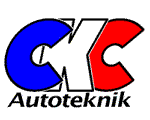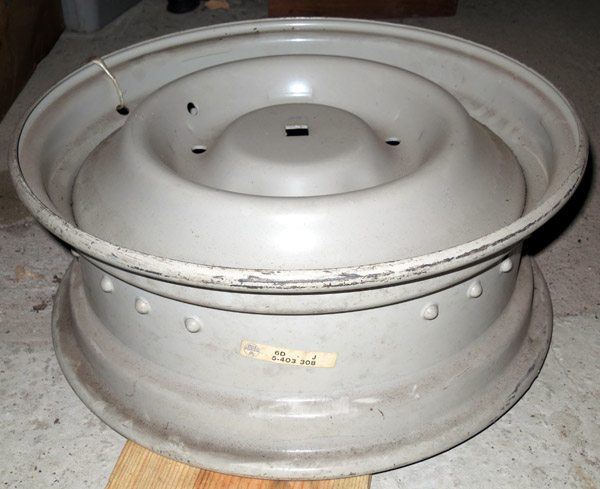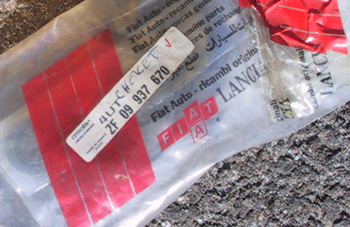

|
|
|
| |
Vehicle group codes |
With the appearance of other number series, for instance numbers 5 000 000 or ZC 9000 000 U, from around 1970, it was not possible to see anymore which model or group of organs, the part belonged to. In order to serve this need, Citroën (in their spare parts catalogues, price lists etc.) gave the spare part numbers a prefix denoting the model and spare parts group. When ordering the parts, still the original number only should be quoted, but in catalogues, price lists and not least on the labels on the parts themselves, this group prefix was included. This helped (and still helps) anyone working with Citroën spare parts to see immediately where a given spare part fits.
The group code consists of a number (usually 1-9), denoting what part of the car (or what group of organs, as it is called in French) the part belongs to. This is followed by one or two letters, denoting what car model the part was originally intended for. A particular spare part can, however, be re-used on other parts of a car or on other models, but the first time the part entered the catalogue, it got this group code. This is not completely static, though, as there are numerous examples where a spare part changes group code over time.
Below, you find lists of vehicle group codes for the different models.
The old vehicle group codes used in the 70's with just one letter, can be found in this (possibly incomplete) table.
|
|

|
Between N and P, it seems that O has been skipped to avoid confusion with a number, and the only "unassigned" letter is therefore V. This brings us to the exciting question: Is there yet another model not in the list that ought to be? Obvious candidates are FOM or 180K/C350K. All observations on this are welcome.
|


An example of a list of most vehicle group codes from a spare parts
catalogue from 1987.
|
Supplementary to these model codes for the cars themselves, Citroën also used spare parts type codes from around september 1997. They denote other kinds of spare parts, such as accessories and the parts that do not belong to a particular vehicle.
| Group code | Spare parts type |
|---|---|
| AJ | A-model accessories |
| BJ | C35 accessories |
| EJ | Berlingo accessories |
| FJ | Xantia accessories |
| KJ | BX accessories |
| MJ | CX accessories |
| NJ | ZX accessories |
| JJ | C25 accessories |
| PJ | Xsara accessories |
| RJ | Evasion accessories |
| SJ | Saxo accessories |
| UJ | Jumpy accessories |
| VJ | Visa+C15 accessories |
| XJ | Jumper accessories |
| YJ | XM accessories |
| ZJ | AX accessories |
| ST | Standard accessories |
| S1 | Paint RM |
| S2 | Paint AKZO |
| S3 | Paint PPG |
| S5 | Paint Herberts |
| S7 | Paint Dupont-Nemours |
| SD | Various standard accessories |
| SX | Accessories for other makes |
| A0 | Non-specific accessories |
| A1 | Accessories: Cargo carrier, towing rope etc |
| A5 | Accessories: Electronic equipment |
| A6 | Accessories: Burglar alarm |
| A7 | Accessories: Sound equipment |
| A8 | Accessories: Marketing items |
| B0 | Tooling DAV (=Département Àpres Vente) |
| B1 | Tooling DPR (=Département Pièces de Rechange) |
| B2 | Products "Image Boutique" |
| B3 | Products not belonging to "Image Boutique" |
| B7 | Products: L.R. |
| BB | Products: Batteries |
| LA | VN forms (Voitures neuves/New cars) |
| LB | VO forms (Voitures d'occassion/Used cars) |
| LC | APV forms |
| LD | VPA forms |
| LE | Micro film spare parts |
| LF | Catalogues spare parts |
| LG | CD-ROM with spare parts |
| LH | Posters |
| LK | Sales catalogues |
| LL | Sales brochures |
| LN | Sales boards, new cars (PLV VN) |
| LP | Sales boards, used cars (PLV VO) |
| LQ | Sales boards, spare parts (PLV DPR) |
The source of this table is some internal Citroën documentation. It is translated to the best of my ability, but I have not yet figured out what APV, VPA and L.R. stands for.
Generally, you have to be aware, that many different sets of model codes have been used over time and in different contexts. They may seem quite similar, but may differ in important points. Some of these different contexts are:
Take Ami8 as an example. It was sold as Ami8 (except in Spain where it was called C8), but in the first spare parts catalogues, it has the model designation AM 3 (or in the different versions with the large rear door AMB 3, AMF 3 or AMC 3). In catalogues from the 70's, spare parts have the model prefix E (or F) and later AM (or AB). Spare parts produced for this model may start with the letters AM, AMB, AMF, AMN and AMU, and later on of course have a number in the 5 000 000 series. A complicating factor is also the fact that while Ami6 and Ami8 have separate vehicle group codes in the 70's (M resp. E), they share the prefix AM in the 80's. In French type approvals, Ami8 has the official designation ("code mines") "AM série JA" (for break versions JA and JC) and the so-called model guarantee designation is AMB, JA, JA and JC, depending on the particular model.
Other examples are the 2CV van, which originally was named AU, later AZU and AK. In the 70's it has the vehicle group code U in spare parts catalogues, but spare parts beginning with U has (normally) nothing to do with this model. Everyone knows the model AX, produced 1986-98, but the spare parts starting with AX from around 1969 have nothing to do with the AX model. AX on the other hand, has the vehicle group code ZA, but spare parts starting with ZA are typically made for the C35 van.
It is equally complicated for most of the other models. When you associate a particular code with a particilar model, it is always very important to make it clear what context and period you are talking about.
Last, but not least, it is also very important to maintain some scepticism and
common sense. Take a look, for instance, at this label on an exhaust pipe:
The first thought that comes to mind, is that the model code DV must be
some kind of D-model — however, it is not in any of the tables above. Is this
a very rare ID ambu safari break commerciale in a military edition for
exotic export markets, you wonder?
You may even be confused by the fact that there are indeed
spare parts numbers that start with DV. Exciting?
No — this is, alas, just
a dull exhaust pipe for a Visa, which should have had the model
code 6VD instead
of 6DV. Another specimen of this part in my stock has this label without the error:
Another example is this box with compression rings for A-models which in the
heat of the moment has been labeled as CX parts:
From all this, you can derive that these spare part number labes are probably not printed directly from a computer that does a lookup in a database, but rather produced by a more manual process.